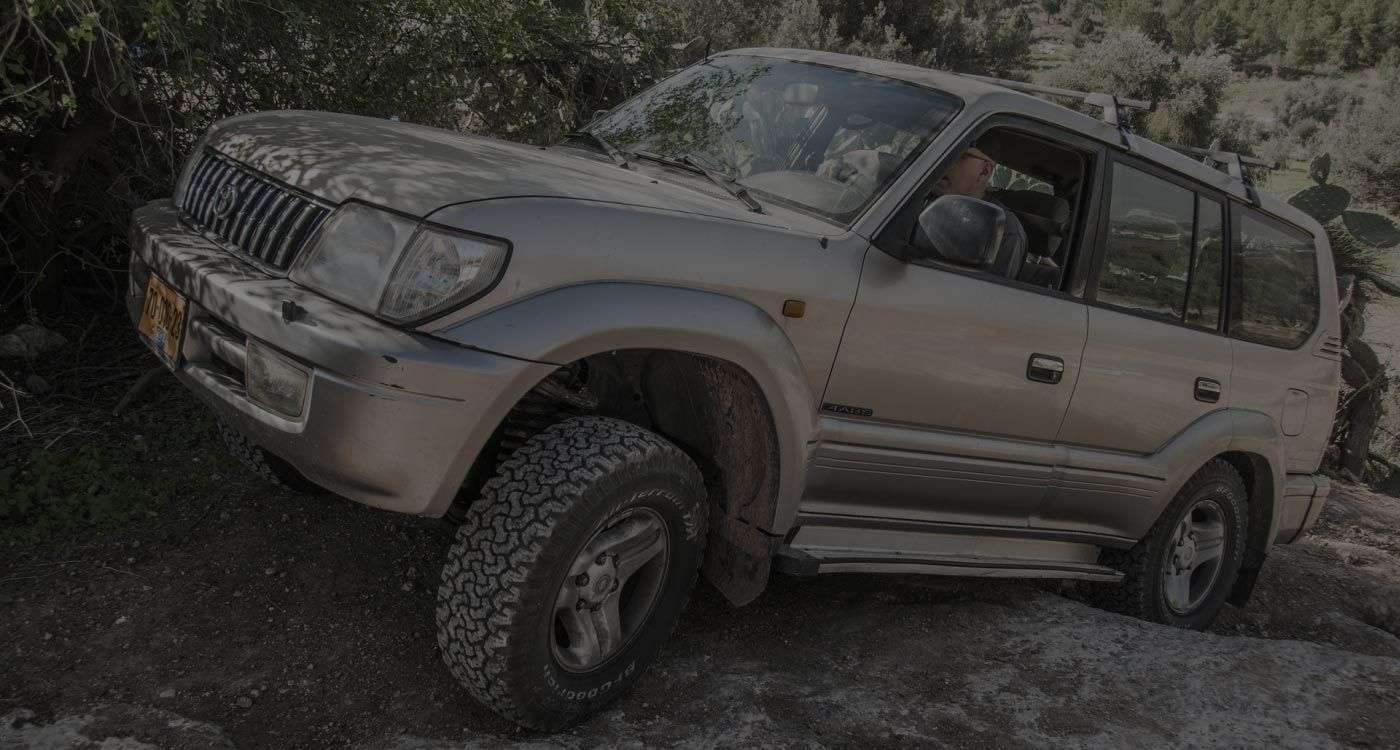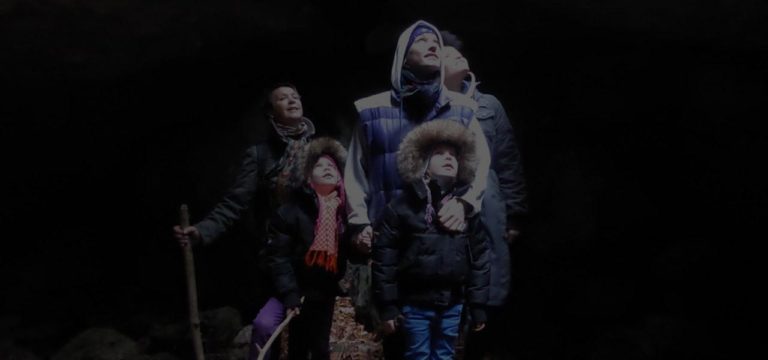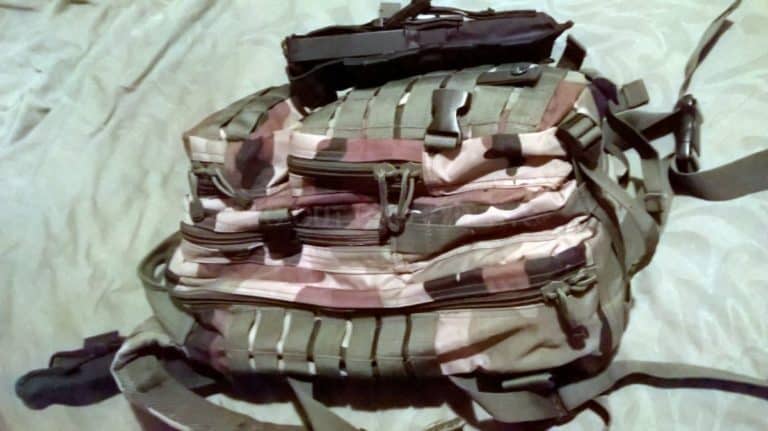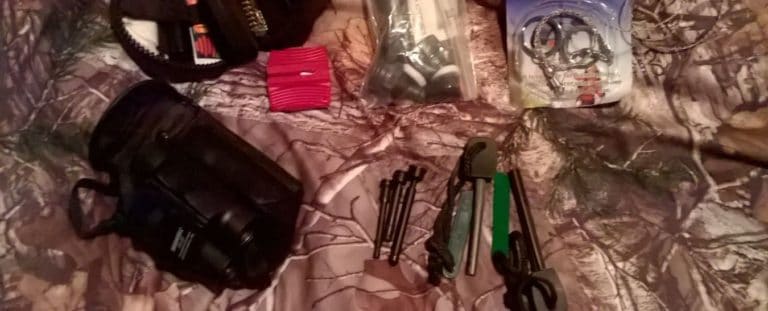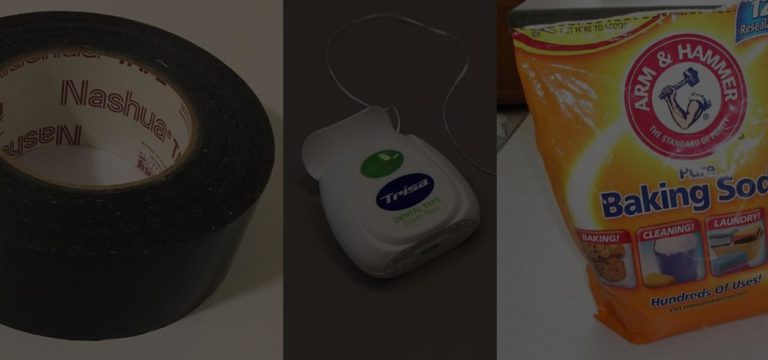The Ultimate List of Items for Your Car
Packing a bug out bag for your car requires just as much thought as a personal BOB. Your car will have room for more, but you don’t want to waste space or carry unnecessary weight. The less weight, the better the acceleration and braking – and this affects your fuel consumption. Many items can do double duty, so often items listed under vehicle can be used for personnel and vice versa.
It is wise to be prepared for anything from a 24-hour to 72-hour situation where you may not be able to get home. Incidents when out driving could be as minor as minor as a breakdown or an obstruction in the road to a major weather induced catastrophe, accident in an isolated area or rioting to name a few.
FOR THE VEHICLE
Tow strap
This can get you out of a muddy situation, be used to pull another car out of trouble, remove an obstacle blocking the road, and can even be used to string up as a guide between two trees so you can drape a tarpaulin over to provide night time shelter or day time shade. It can also be used between the vehicle and one tree to drape the tarpaulin and if there are no trees a boulder will suffice and you angle the rope down from the vehicle roof rack to the ground and fasten it.
Disclosure: when you click a link leading to a 3rd party website, I may earn a commission if you make a purchase. As an Amazon Associate I earn from qualifying purchases.
Although a bit heavy, a tow strap can be used to get people across a river, pull people, animals and vehicles to safety or even be used for rescue from a cliff face. Then there is of course its original purpose- towing a broken down vehicle to safety.
Battery Cables
Always useful in getting your own vehicle back on the road or helping someone else out to get the motor swinging so they are not holding up a convoy or blocking a lane.
Headlamp and flashlight
When your vehicle has mechanical problems in the dark in a rural area and you pop the hood there are no built it under hood lights to see the problem. The headlamp leaves your hands free to start fixing the problem. It also good in a bug out situation for negotiating the dark, and leaves hands free when tending fires or gathering firewood. It can also be used for signaling.
People have their own preferences – whether you choose a higher-powered waterproof flashlight or a waterproof headlamp is up to you. Maybe have both if you expect to bug out with your family. With the headlamp and flashlight make sure to keep the batteries separate in a watertight zip lock bag or container to avoid corrosion.
A flat tire is the last thing you want in a bug out situation. Getting stuck in the middle of nowhere can mean the difference between surviving with the aid of your vehicle or having to hot foot it out of there with only your personal bug out bag. Make sure the spare is always kept pumped to the right pressure and that the jack and wheel spanner are correct for the vehicle.
A quick tire change can get you out of trouble, then at your leisure you can pump up the tire to the right pressure. If travelling in thick sand you’ll need to deflate the tires to get through – then re-inflate when on a hard surface once more. Never deflate them too low in heavy sand otherwise the sand gets between the tire and rim and it doesn’t seal properly causing it to go flat.
Tire plug rubber and screwdriver
Always carry some tire plug material and a large screwdriver to plug punctures caused by nails or other small sharp objects.
Most come with a variety of spanners suited to the vehicle, pliers are handy too.
Spare fan belt
Always have one spare – correctly sized for your vehicle.
Spare fuses
Carry a set of uses of various amperages to suit your vehicle.
Seatbelt Cutter / Window breaker
…for when you need to get out of your car FAST.
This is one of those heavier items you will have to weigh up about keeping in your vehicle. Chances are that you may never need to use it but should the need arise it can save a vehicle before an electrical fire gets out of hand and even lives in camp out situations.
FOR THE PASSENGERS
Water
To stay alive the most basic requirement is water. Three days is all a human can survive without water. In extreme temperatures shelter/protective clothing would rate highly. Plan according to where you travel or live. If in desert areas you won’t need what a person living in the mountains would need.
Have at least 1 gallon of fresh drinking water per person in the vehicle per day – in very hot areas you would need more. You may also need it to top up the radiator/ refill the windscreen wiper bottle.
Life Straw / Sawyer Mini
Have a Lifestraw, Sawyer Mini or water purification tablets with you in case you are not able to get home within 2 days. This way you can use water from streams and other sources knowing that various bacteria have been removed making it safe to drink.

Food
It’s nicer not to be hungry but a person won’t die without food for 72 hours. Low blood sugar levels ma,y however, affect a person ability to think and strategize efficiently so keep some freeze dried meals that can be reconstituted with water.
All you need is boiling water to have a fluffy mix. Instant mashed potato is also useful. Energy bars have a reasonable shelf life and are quite light. Also the old standby of trail mix or peanuts and raisins come in handy.
Warmth
Blankets/sleeping bags
If you live in a desert area a space blanket may be all you need – a tiny silver rectangle that folds out to provide some warmth –but opinion on these is divided. Read this article to see why you shouldn’t use one – then make up your mind. If however you are in a cold area then you may want to include a sleeping bag suited to very cold conditions.
A camo lightweight tent will be inconspicuous and take up very little space, or just use a light tarp over a tow strap support as discussed earlier.
Clothing
Always carry a warm jacket – the warmth factor will be dependent on the conditions and season of the year in your area. The jacket should be waterproof and fleece lined. A spare pair of pants with zip-off legs and a shirt with zip-off sleeves makes for versatility and reduce weight.
In addition in cold areas one should have a balaclava to pull on to protect the face as well as a hat designed to protect the ears. In desert and hot areas a wide brimmed hat will be useful in protecting against sunburn. Always have an extra pair of socks should yours get muddy or wet, perhaps a pair of neoprene over socks and muck boots – what the English call Wellington boots. A bandana is super light and can be used to protect the face from dust, as a primary water filter, to gather fruit/wild herbs, as a neck cloth to prevent sunburn, even as a sling, bandage or tourniquet… and about 101 other uses.
A pair of heavy gloves will be useful in cold weather but also for working with timber, cabling and clearing debris in the event of a catastrophe.
Useful Survival items
A small stainless steel bowl is useful for washing, treating cuts and abrasions, heating water over an open fire, preparing food. A light stainless steel mug will come in useful for drinking or heating liquid over a fire.
Remember waterproof matches or a disposable lighter and a small amount of kindling – use cotton wool balls rubbed with Vaseline. A length of paracord can have around a hundred or more uses in survival situations as does duct tape. If you think you may need it, a flare could assist rescuers in finding you.
Aluminum foil can be used for cooking what you find in the embers of a fire, to signal into the sun like a heliograph, covering sensitive items to protect them from rain. A length of around 100 yards of fishing line and a couple of small hooks and sinkers could net you a fishy supper and is fairly lightweight. If you live nowhere near rivers then leave this out.
Defense
If you feel you need to carry your firearm and ammunition then include this but the tactical tomahawk could be more useful in survival situations – especially a full tang one that has a spike as it can be used to break into or out of a vehicle or building to rescue people, it can be used for chopping wood or kindling, hammering when creating a shelter and even for defense.
A multitool like the Leatherman Skeletool is something you can use for defense as well as a number of tasks in a bug out situation. The carbon fiber version has a better steel blade and looks pretty badass even though it may only weigh about the same as a regular folding knife.
Alternatively, the Gerber Shard that can attach to your key ring, may not have a blade but costs around one tenth of the price of the Leatherman and can perform quite a number of useful tasks like cutting fishing line, opening bottles and even has a 3D Phillips screwdriver that can be used for repairs to spectacles and other items. It’s best to check out various multitools – the ones with a tweezer attachment are very useful for getting out splinters.
First Aid
Build your own kit rather than one pre-packed with items. Most of them you will never use. Rather construct your first aid kit based on the health conditions of the occupants of your vehicle. Basic items if you are stuck are wet wipes and hand sanitizer.
Carry a couple of small plasters and a roll of Elastoplast tape should an injury be more serious. Antibiotic ointment, antihistamine cream to take care of stings may be a good idea. Insect repellent and sunscreen may be necessary in warm areas. Should you be on chronic medication add in 3 days’ worth of meds to cover you. If you are living in or travelling through an area where snakes are problematic then a snakebite kit may be a worthwhile investment – but remember to check expiry dates.
Important documents
On a daily basis. we normally carry our credit and debit cards. For emergencies you should have a handy cash stash. It can buy your way out of various situations, get you the help you need or the items you need more of. Have a copy of important identity documents and a family contact number and keep scanned copies on your phone and on an USB stick.
Speaking of which…
Tech stuff
A pair of light binoculars could be useful in scouting situations to assess potential dangers before proceeding. People always carry their cell phones – make sure you have a car charger in event of an emergency and have emergency contact numbers saved on your cell phone. From the cell phone you can access your position via GPS and know where to head. Should the cell phone coverage be down then a dash mounted compass could be a good idea.
Wrap-Up
Check through your BOB for the car tossing out what is not needed periodically. As you progress in your preparations the bag should get lighter and more efficient. Test it out by spending a night in the wilderness without planning ahead and see where you feel improvements could be made for your situation.
